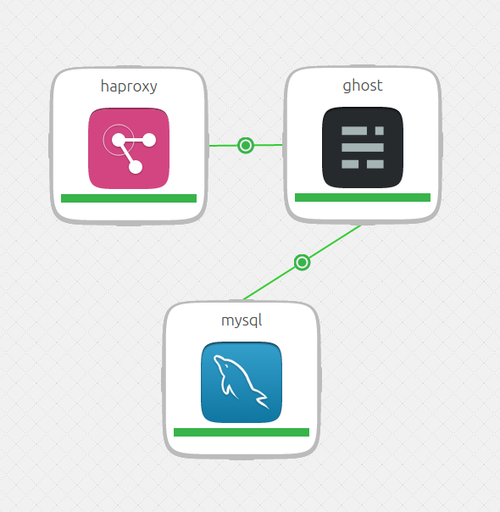Juju - Explain it to me like I’m 5
Juju is brilliant. Ok I am a little biased being that I work at Canonical on the Juju project, but every week I’m more and more impressed with how awesome Juju is and how easy it makes developing software and working in the cloud. I tweet and post a bunch about Juju but today I was asked to explain what Juju is to someone like they are 5.
Juju is often described as apt-get for the cloud, but what does someone who isn’t familiar with the Ubuntu ecosystem know about apt-get? I think I’ll need to go even more abstract…
Let’s say that you had built the most awesome Lego race car body (kids still play with Lego right?) but you didn’t know how to make the wheels or make it move with one of those Mindstorm engines. So now you have to go and play around for a long time to learn how to make a wheel and how to hook up engines. But this is going to take a long time and your mom is going to call you for supper soon, there has to be someone who is an expert wheel maker and Mindstorm engine builder right? Wouldn’t it be awesome if they could build wheels and engines you could use in your race car so you can finish it before supper?
Well that is what Juju does. It allows people who have expertise in a specific field to build packages that you can connect to your own projects without needing to be an expert in that field. So how does this help you write software faster in the cloud? Well I think that’s best explained with another, more grown up, example.
Recently, I wrote a Juju Charm for the Ghost blogging platform so that I can move this blog off of Tumblr and onto something a little more customize-able. The problem? I needed a front end server which was capable of load balancing the webservers when the load picks up and I don’t have the time to learn all about the various options and the best way to install and configure them. So I went to what’s known as the Juju Charm Browser and picked the haproxy Charm and added it into my environment. With multiple web servers I could no longer rely on Ghost’s built in SQLite implementation so I needed to hook up to an external MySQL database. Back to the Charm Browser I went and grabbed the MySQL Charm.

So now I have a load-balanced horizontally scale-able Ghost blog (coming soon). You can have one too, it’s incredibly easy too. For you to get your very own horizontally scale-able load-balanced Ghost blog all you have to do is execute these commands:
juju deploy ghost
juju deploy haproxy
juju deploy mysql
juju add-relation ghost haproxy
juju add-relation ghost mysql
Lets pretend for a moment that haproxy isn’t cutting it any longer and you instead want to use apache2:
juju destroy-service haproxy
juju deploy apache2
juju add-relation ghost apache2
Maybe your blog is super popular and you need another 5 webservers:
juju add-unit ghost -n 5
That’s it. You have now taken advantage of many peoples domain expertise to develop a cloud environment for your own blog.
So what if you wanted to use MySQL or any of these other Charms for a different application? That’s the best part these charms are written using the best practices for the particular charm but have easy to interface with hooks. To enable the Ghost charm to communicate with the haproxy charm all I had to write was:
#!/usr/bin/node
var exec = require('child_process').exec;
var port, address;
function storePort(err, returnedPort) {
port = returnedPort;
exec('unit-get --format=json private-address', storeAddress);
}
function storeAddress(err, returnedAddress) {
address = returnedAddress
exec('relation-set port=' + port + ' hostname=' + address);
}
exec('config-get --format=json port', storePort);
Juju charms can be written in anything that can be executed. The Ghost charm was written in JavaScript, the MySQL one in bash. Others use Python, Puppet, Chef, Ansible, even Docker containers can be orchestrated using a Juju Charm.
Want to run your own wiki:
juju deploy mediawiki
juju deploy mysql
juju deploy haproxy
juju add-relation mediawiki mysql
juju add-relation mediawiki haproxy
How about a MongoDB cluster, Hadoop cluster, Django app, a video transcoding cluster, and more including your own applications. All easily deployable and scalable across public clouds like EC2, HP Cloud, Joyent, Your private OpenStack cloud, and even your very own local machine. That’s right, the above commands all work to deploy identical set ups to all of these targets and more.
This just scratched the surface of the power of Juju but I hope that this glimpse has made you interested enough to go do some exploring of your own. You can find the documentation to get started with Juju here. And as always if you have any questions or comments you can comment below, find me on Twitter @fromanegg on G+ +Jeff Pihach or hop into #juju on irc.freenode.net and ask away.